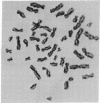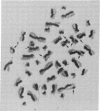Abstract
Dividing cells from persons with Bloom's syndrome, an autosomal recessive disorder of growth, exhibit increased numbers of chromatid breaks and rearrangements. A highly characteristic feature of the chromosome instability in this syndrome is the tendency for exchanges to occur between chromatids of homologous chromosomes at homologous sites. In the present experiments, a cytogenetic technique by which the sister chromatids of a metaphase chromosome are stained differentially has been used to demonstrate a striking and possibly specific, but hitherto unrecognized, increase in the frequency with which sister chromatids also exchange segments. The cells were grown in bromodeoxyuridine and stained with 33258 Hoechst and Giemsa. Whereas phytohemagglutinin-stimulated lymphocytes from normal controls had a mean of 6.9 sister chromatid exchanges per metaphase (range 1-14), those from persons with Bloom's syndrome had a mean of 89.0 (range 45-162). Normal frequencies of sister chromatid exchanges were found in cells heterozygous for the Bloom's syndrome gene, and also in cells either homozygous or heterozygous for the genes of the Louis-Bar (ataxia telangiectasia) syndrome and Fanconi's anemia, two other rare disorders characterized by chromosome instability.
In a differentially stained chromatid interchange configuration discovered during the study, it was possible to determine the new distribution of both sister and non-sister-but-homologous chromatids that had resulted from numerous exchanges. By following shifts in the pattern of staining from chromatid to chromatid, visual evidence was obtained that the quadriradial configurations long recognized as characteristic of Bloom's syndrome represent exchanges between homologous chromosomes, apparently at homologous points.
We postulate that the increase in the frequency of exchanges between nonsister-but-homologous chromatids and those between sister chromatids in Bloom's syndrome represents aspects of one and the same disturbance. A study of this phenomenon in relation to the clinical features of Bloom's syndrome may be helpful eventually in understanding the biological significance of chromatid exchange in somatic cells.
Keywords: BrdU substitution, chromosome rearrangement, Fanconi's anemia, ataxia telangiectasia
Full text
PDF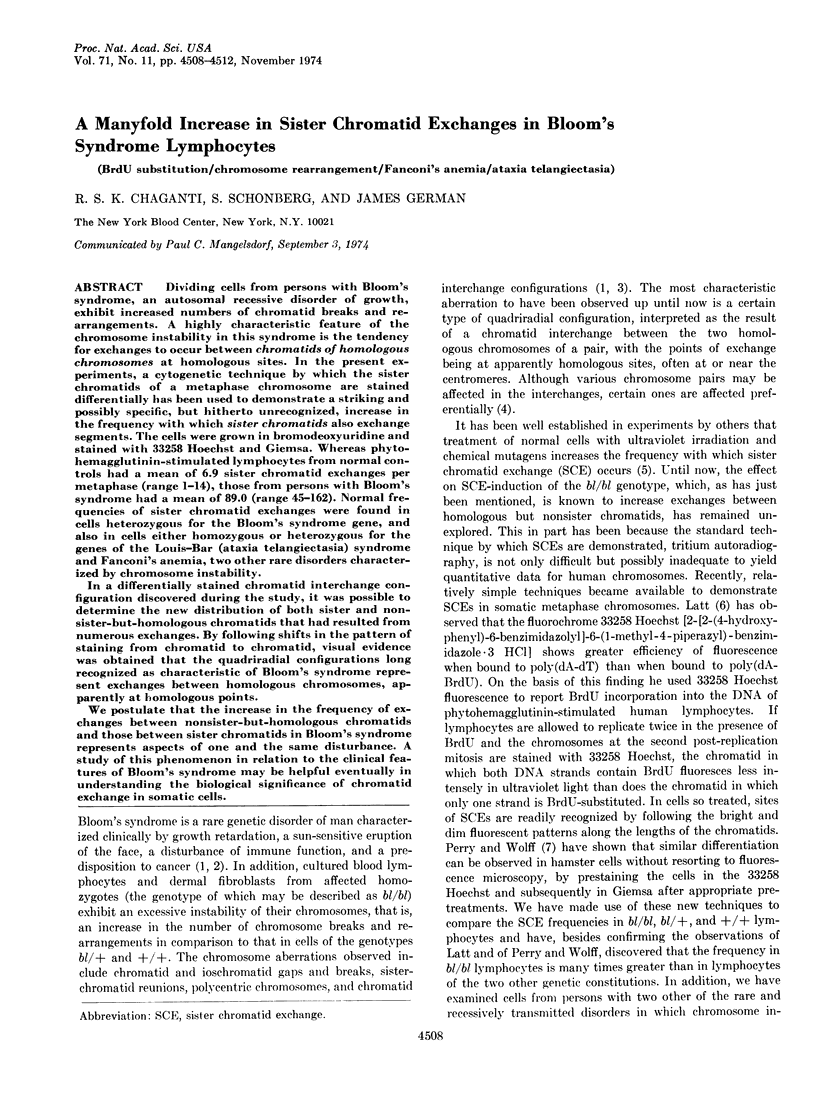
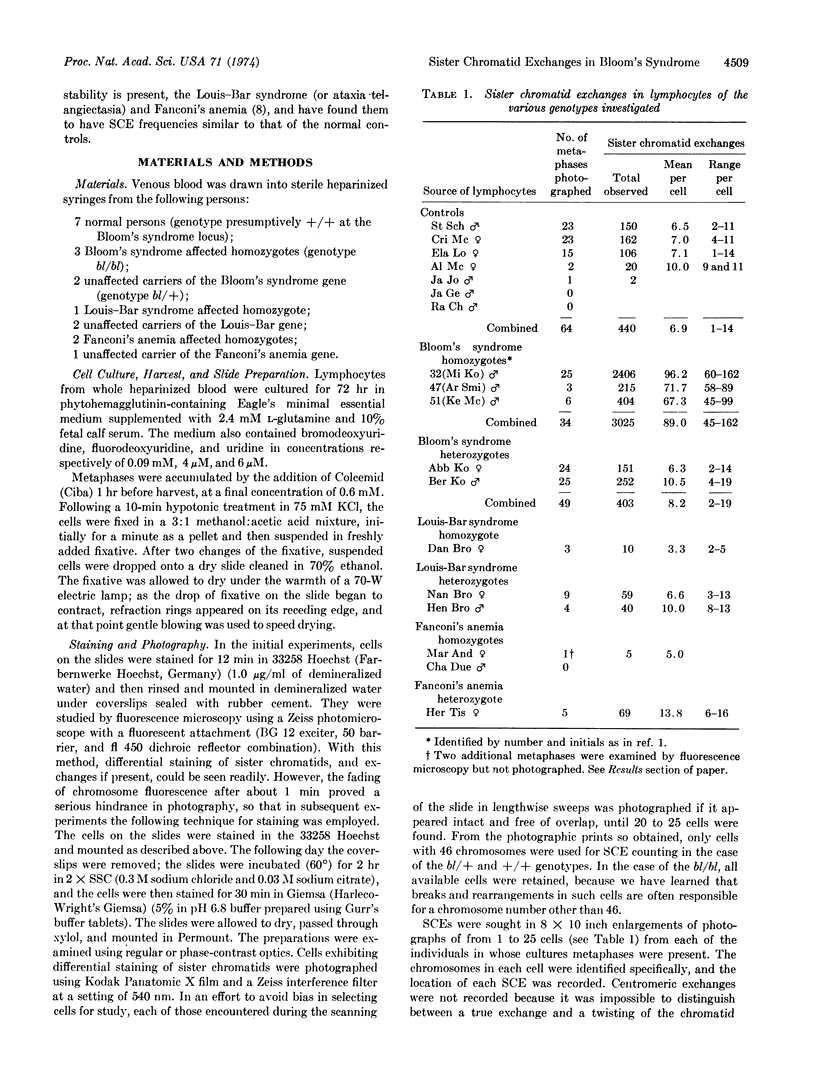
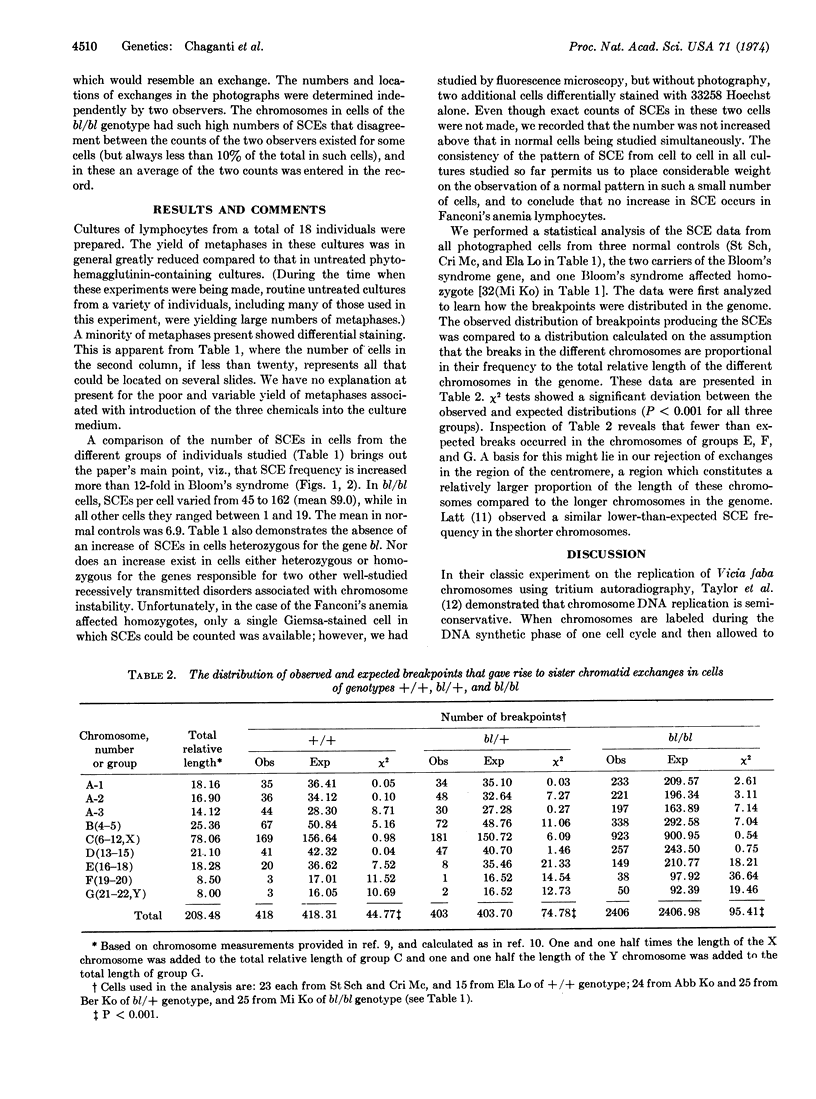
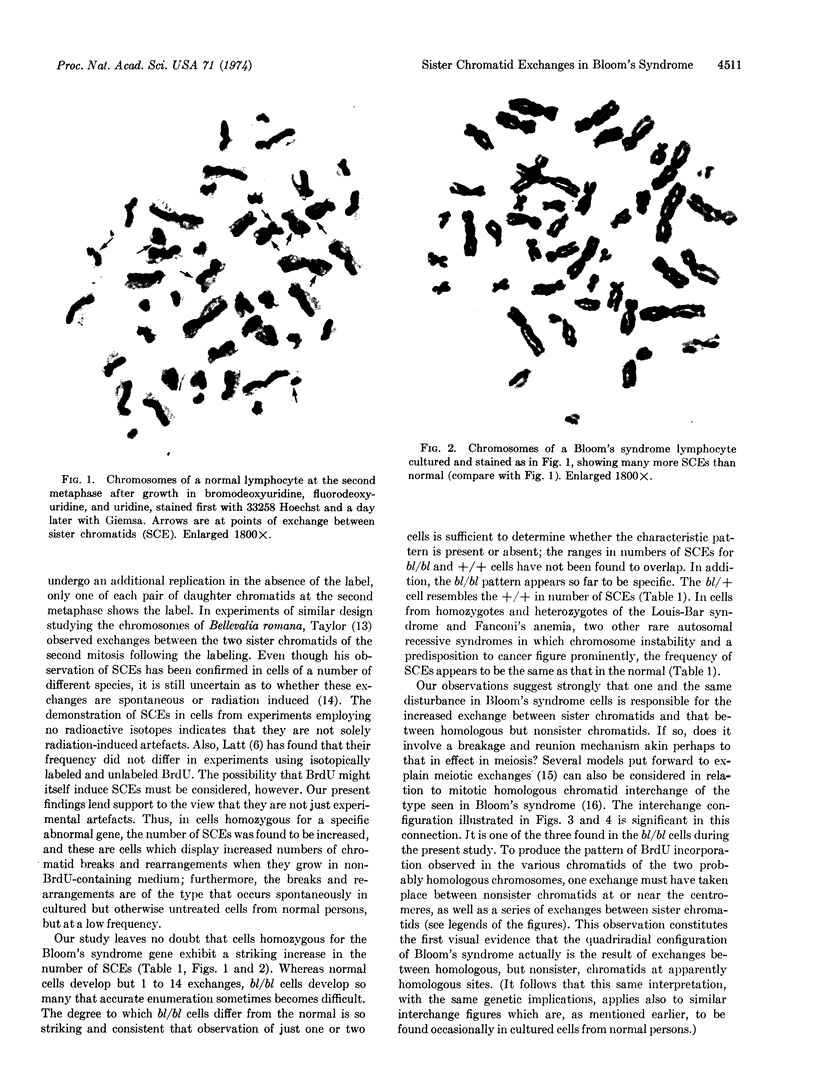
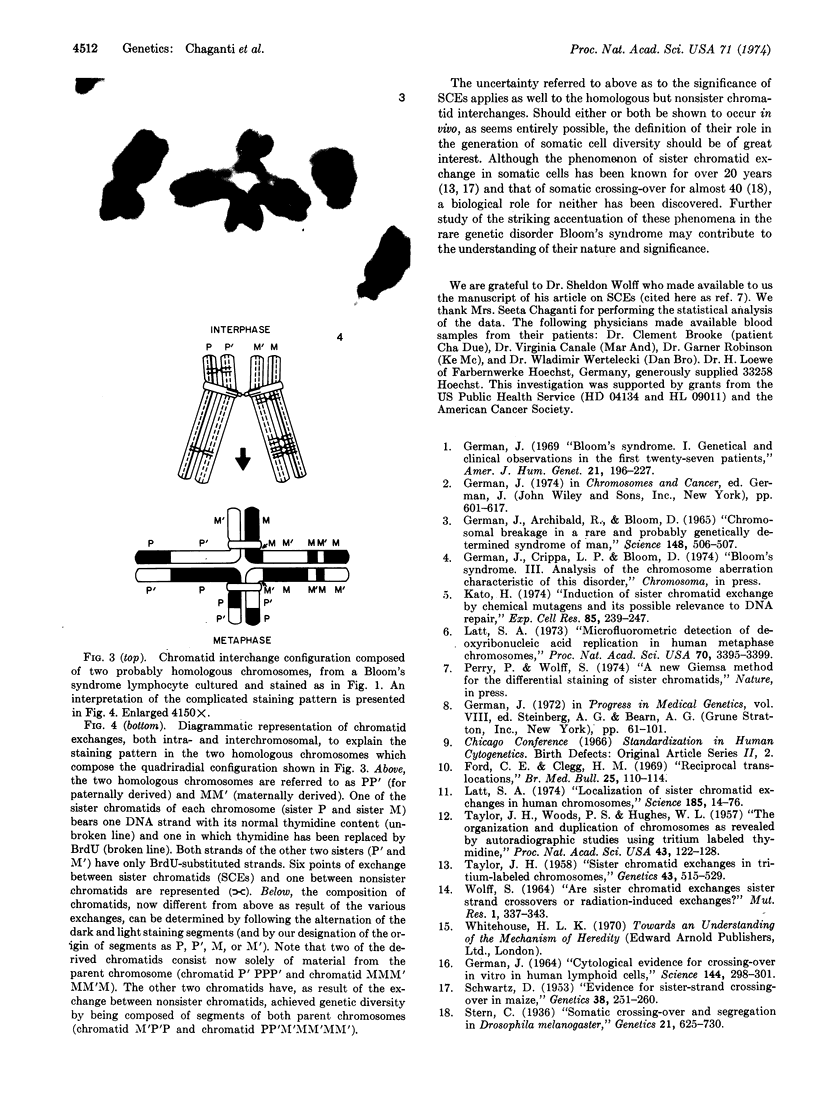
Images in this article
Selected References
These references are in PubMed. This may not be the complete list of references from this article.
- Ford C. E., Clegg H. M. Reciprocal translocations. Br Med Bull. 1969 Jan;25(1):110–114. doi: 10.1093/oxfordjournals.bmb.a070659. [DOI] [PubMed] [Google Scholar]
- GERMAN J., ARCHIBALD R., BLOOM D. CHROMOSOMAL BREAKAGE IN A RARE AND PROBABLY GENETICALLY DETERMINED SYNDROME OF MAN. Science. 1965 Apr 23;148(3669):506–507. doi: 10.1126/science.148.3669.506. [DOI] [PubMed] [Google Scholar]
- GERMAN J. CYTOLOGICAL EVIDENCE FOR CROSSING-OVER IN VITRO IN HUMAN LYMPHOID CELLS. Science. 1964 Apr 17;144(3616):298–301. doi: 10.1126/science.144.3616.298. [DOI] [PubMed] [Google Scholar]
- German J. Bloom's syndrome. I. Genetical and clinical observations in the first twenty-seven patients. Am J Hum Genet. 1969 Mar;21(2):196–227. [PMC free article] [PubMed] [Google Scholar]
- Kato H. Induction of sister chromatid exchanges by chemical mutagens and its possible relevance to DNA repair. Exp Cell Res. 1974 Apr;85(2):239–247. doi: 10.1016/0014-4827(74)90123-2. [DOI] [PubMed] [Google Scholar]
- Latt S. A. Localization of sister chromatid exchanges in human chromosomes. Science. 1974 Jul 5;185(4145):74–76. doi: 10.1126/science.185.4145.74. [DOI] [PubMed] [Google Scholar]
- Latt S. A. Microfluorometric detection of deoxyribonucleic acid replication in human metaphase chromosomes. Proc Natl Acad Sci U S A. 1973 Dec;70(12):3395–3399. doi: 10.1073/pnas.70.12.3395. [DOI] [PMC free article] [PubMed] [Google Scholar]
- Schwartz D. Evidence for Sister-Strand Crossing over in Maize. Genetics. 1953 May;38(3):251–260. doi: 10.1093/genetics/38.3.251. [DOI] [PMC free article] [PubMed] [Google Scholar]
- Stern C. Somatic Crossing over and Segregation in Drosophila Melanogaster. Genetics. 1936 Nov;21(6):625–730. doi: 10.1093/genetics/21.6.625. [DOI] [PMC free article] [PubMed] [Google Scholar]
- Taylor J H. Sister Chromatid Exchanges in Tritium-Labeled Chromosomes. Genetics. 1958 May;43(3):515–529. doi: 10.1093/genetics/43.3.515. [DOI] [PMC free article] [PubMed] [Google Scholar]
- Taylor J. H., Woods P. S., Hughes W. L. THE ORGANIZATION AND DUPLICATION OF CHROMOSOMES AS REVEALED BY AUTORADIOGRAPHIC STUDIES USING TRITIUM-LABELED THYMIDINEE. Proc Natl Acad Sci U S A. 1957 Jan 15;43(1):122–128. doi: 10.1073/pnas.43.1.122. [DOI] [PMC free article] [PubMed] [Google Scholar]



